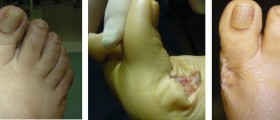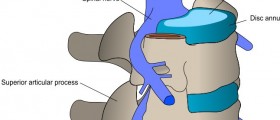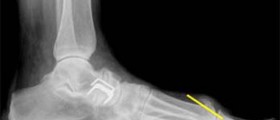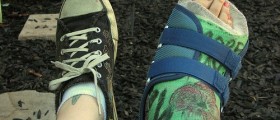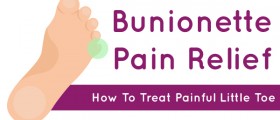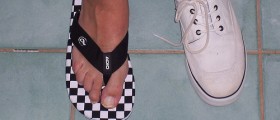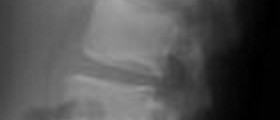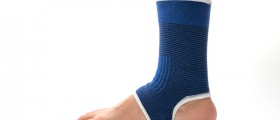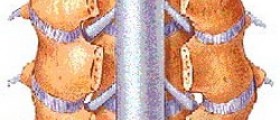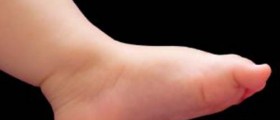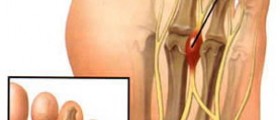? I am schedule for a bone fusion of my right big toe due. I am aware of the severity of pain and the amount of recovery time. How painful is this surgery? What are the risks?
Loading...
Surgery should only be undertaken if your symptoms are significant, and appropriate treatment without surgery is not satisfactory to you. There are two forms of surgery: "cheilectomy" and "fusion Seems like you and your Doctor have agreed that a fusion is your best bet.
The operation aims to re-align the great toe and get rid of the pain. It usually maintains strength of the great toe and reduces pain, but movement is lost.
Because the operation involves holding raw bone edges together while they heal, two internal screws are usually inserted. The foot is usually protected in a post-operative shoe. The screws may need removal at a later date if they cause symptoms.
After the operation, you will wake up with your foot in a bandage. The foot is always painful, but it is usually possible to control the pain with oral medication. In order to minimise swelling, you will need to keep your foot up after for the two weeks following the operation
(whee! )
When the foot is lowered it will throb and swell. This should be avoided...keeping the foot lowered for too long a time...of course, the throbbing and swelling..well of course you want to avoid that!
With time, the period you can keep the foot down will increase. After two to three weeks you should be able to keep it down most of the time.
At around two weeks after surgery, you will return to the Doctor for removal of stitches. Following this your recovery will depend on the sort of operation you have had. Ask your Doctor.
On average, you should expect to spend six weeks in the post-operative shoe. After this you will need an open toed sandal, preferably with adjustable straps. It will be a another six to eight weeks before you can wear a regular shoe for a work day. It is usually three to six months from the operation before you can hope to take up recreational walking or light sport activities.
In the longer-term many people will be able to run and participate in sports after a fusion. This cannot be guaranteed, everyone is different.
If you are slower than these times do not panic, they are only averages, but let your surgeon know if you are concerned.
Although the operation produces good results in most cases, complications do occur. Despite the great care that is taken with the operation and aftercare, a small number of people (up to 10%) may have a less than perfect results due to problems such as:
* non-healing of the bone (occurs in about one in 20 people), and may require further surgery. Smoking increases the risk of this complication considerably. :cry:
* the position in which the toe is set can also cause problems. Women may find that they cannot wear high heels after a fusion. A few people will find that the position in which the toe is set does not suit them individually, and may consider further surgery to adjust this.
*There might be a change of sensation of the foot due to damage to the small nerves and blood vessels.
Infection.
The complications of any surgery such as a blood clot and anaesthesia problems.
(* these complications only occur after fusion)
Most problems can be treated by medications, therapy and on occasion by further surgery..let us hope not!.
Your Doctor probably has talked with you if you are at particular risk of complication. If you have any worries, you should ask the doctor treating you who will explain it to you.
Good luck and speedy recovery!
The operation aims to re-align the great toe and get rid of the pain. It usually maintains strength of the great toe and reduces pain, but movement is lost.
Because the operation involves holding raw bone edges together while they heal, two internal screws are usually inserted. The foot is usually protected in a post-operative shoe. The screws may need removal at a later date if they cause symptoms.
After the operation, you will wake up with your foot in a bandage. The foot is always painful, but it is usually possible to control the pain with oral medication. In order to minimise swelling, you will need to keep your foot up after for the two weeks following the operation
(whee! )
When the foot is lowered it will throb and swell. This should be avoided...keeping the foot lowered for too long a time...of course, the throbbing and swelling..well of course you want to avoid that!
With time, the period you can keep the foot down will increase. After two to three weeks you should be able to keep it down most of the time.
At around two weeks after surgery, you will return to the Doctor for removal of stitches. Following this your recovery will depend on the sort of operation you have had. Ask your Doctor.
On average, you should expect to spend six weeks in the post-operative shoe. After this you will need an open toed sandal, preferably with adjustable straps. It will be a another six to eight weeks before you can wear a regular shoe for a work day. It is usually three to six months from the operation before you can hope to take up recreational walking or light sport activities.
In the longer-term many people will be able to run and participate in sports after a fusion. This cannot be guaranteed, everyone is different.
If you are slower than these times do not panic, they are only averages, but let your surgeon know if you are concerned.
Although the operation produces good results in most cases, complications do occur. Despite the great care that is taken with the operation and aftercare, a small number of people (up to 10%) may have a less than perfect results due to problems such as:
* non-healing of the bone (occurs in about one in 20 people), and may require further surgery. Smoking increases the risk of this complication considerably. :cry:
* the position in which the toe is set can also cause problems. Women may find that they cannot wear high heels after a fusion. A few people will find that the position in which the toe is set does not suit them individually, and may consider further surgery to adjust this.
*There might be a change of sensation of the foot due to damage to the small nerves and blood vessels.
Infection.
The complications of any surgery such as a blood clot and anaesthesia problems.
(* these complications only occur after fusion)
Most problems can be treated by medications, therapy and on occasion by further surgery..let us hope not!.
Your Doctor probably has talked with you if you are at particular risk of complication. If you have any worries, you should ask the doctor treating you who will explain it to you.
Good luck and speedy recovery!
Loading...


